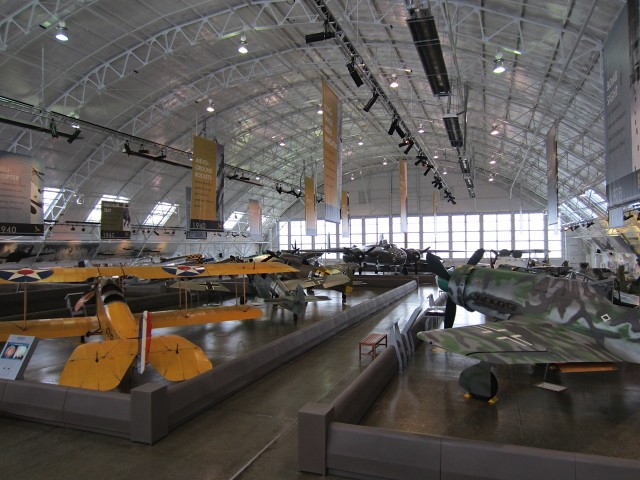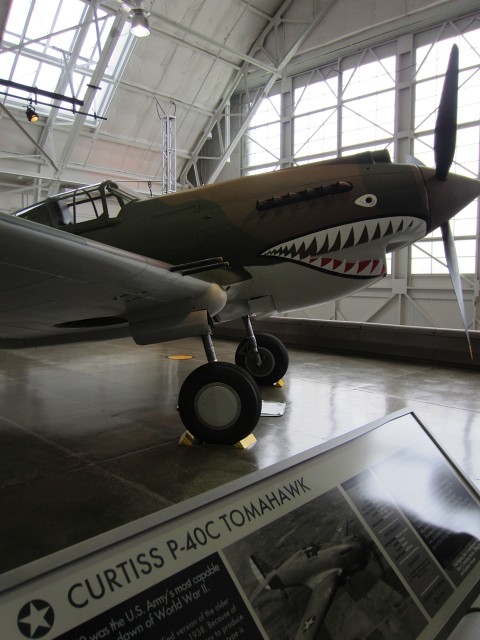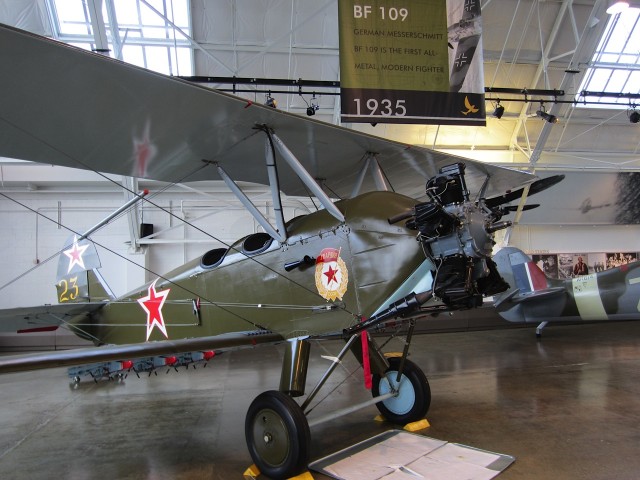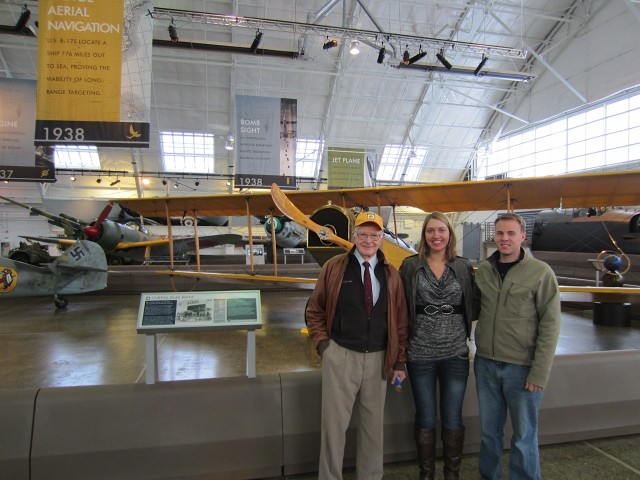Friends of mine, Maresa, recently started a new blog that looks at all the great opportunities around the greater Seattle area called AroundPugetSound.net. She recently visited the Flying Heritage Collection and did a great review that I wanted to share. She is not an aviation geek, so it is great to see a review from the perspective of those who just have an interest in the area, history and how things work. Here is Maresa’s review in her own words…
My grandfather came into town from Minnesota last week to visit; he’s been a pilot for over 50 years. My husband and I always like taking Grandpa on flying-related outings whenever he’s in town. Last year we explored the Future of Flight together and he’s visited the Museum of Flight at Boeing Field in the past. This year we needed something different. Lucky for us we recently heard about Paul Allen’s airplanes at Paine Field in Everett: The Flying Heritage Collection. When we arrived at the Flying Heritage Collection, we were escorted back through history and it has now become one of our favorite museums.
Next to all of the giant Boeing hangers, Paul Allen’s hangar doesn’t appear very big. But, once inside the museum hangar, you’ll find they have fit 16 aircraft–mostly from the World War II era– two WWII army tanks, and two missiles. They also have a replica of SpaceShipOne, the first private-venture rocket ship. State of the art restoration techniques have been used to refurbish these vintage airplanes and other artifacts. Many of the planes have stories. For example, the Messerschmitt BF 109 E-3 (Emil), was found in several pieces buried in sand along the English Channel by a man walking the beach in the late 1980s. With time and the right replacement parts, plus liberal funding, it has been returned to its original form. The planes look as sharp as they did when they were manufactured over 70 years ago.
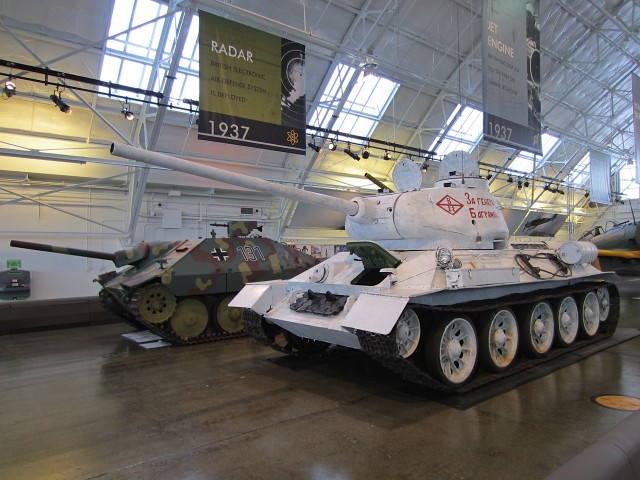
The WWII tanks at the museum--yes they can still fire and they have armor that's a good 3 inches thick
Free Fly Days
Our tour was lead by a docent, Jack. Jack was extremely well-prepared and superbly informed about each exhibit in the museum. One of the first things Jack told us was that all of the planes were in flying condition and the all tanks could still be driven and fire ammunition, making this more of a functional collection than simply a museum. As we walked around in the museum, mechanics were working on several of the planes, ensuring that they would be in good operating condition for the yearly Free Fly Days that happen every summer. The “Free Fly Days” don’t afford the public rides in the plane, but allow you to come and be part of history by witnessing the operation and flight of these historic planes as experienced pilots take off and land the planes just outside the hangar.
The “Night Witches” were female Russian pilots who flew PO-2 biplanes during WWII. These bomber pilots were part of a unit that was entirely operated by women. As you know, for women to fly in direct combat was extremely rare at this time in history. The Soviet Union was the first country to allow women in combat after Stalin approved a plan to use this regiment of young women against the invading Germans. Many of these female pilots were teenagers at the time. The “Night Witches” would fly low over the German soldiers, with the darkness of night on their side, and conduct daring raids on the Germans. They would fly the PO-2 close to the ground, cut off its engine, so as not to attract attention, and release their bomb load as they glided.
While the Night Witches didn’t end up causing too much damage, their incessant bombing missions kept the Germans up all night, and reportedly stressed and demoralized the German troops. The German troops were also put out by the fact that these were women conducting the raids, and thus they gave them the name, “The Night Witches.” These Russian pilots earned high honors in Russia as being “Heros of the Soviet Union” during the war.
Back To The Collection
We highly recommend asking for a tour guide when you arrive. Your docent will make the history of the airplanes come to life in a way that they may not otherwise. My grandfather, who has studied and known WWII aircraft for many years, said that he learned a great deal from our docent. We are looking forward to returning to the Flying Heritage Collection for their Free Fly Days to hear the planes’ motors roar and watch history soar.
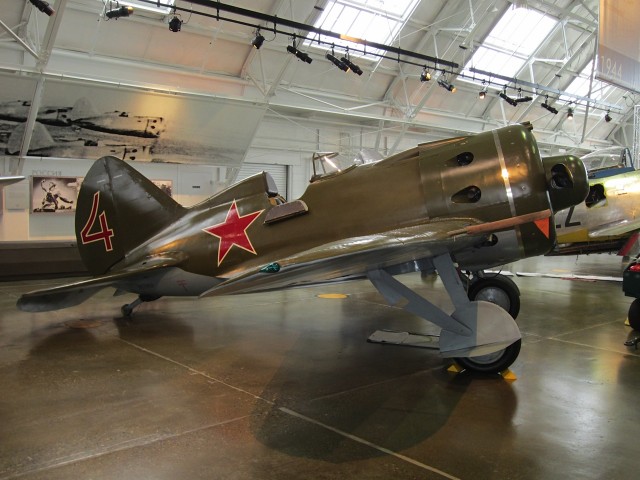
Polikarpov I-16 Type 24 "Rata"--this was a very sturdy plane that could handle being shot at much longer than many other planes
Things To Know
- Hours: Open daily 10:00 am to 5:00 pm
- This is a great outing to take your kids on, especially if they’re studying WWII history in school
- Free parking on-site
- Admission fees: Adults $12, Seniors/Military $10, Youth (6-15 years) $8, Children (5 and under) Free
- Free Fly Days: There’s usually one in June and in July, and a couple in August and in Septemberthey take out different planes on different days
Directions
From I-5 take the exit to Highway 525 toward the Mukilteo Ferry
Highway 525 will become the Mukilteo Speedway
Turn right onto Beverly Park Road
Follow the “Flying Heritage Collection” Signs to the parking lot
End at: Paine Field 3407 109th Street SW Everett, WA 98204
You can follow Maresa on her adventures at AroundPugetSound.net, via Facebook or Twitter.
